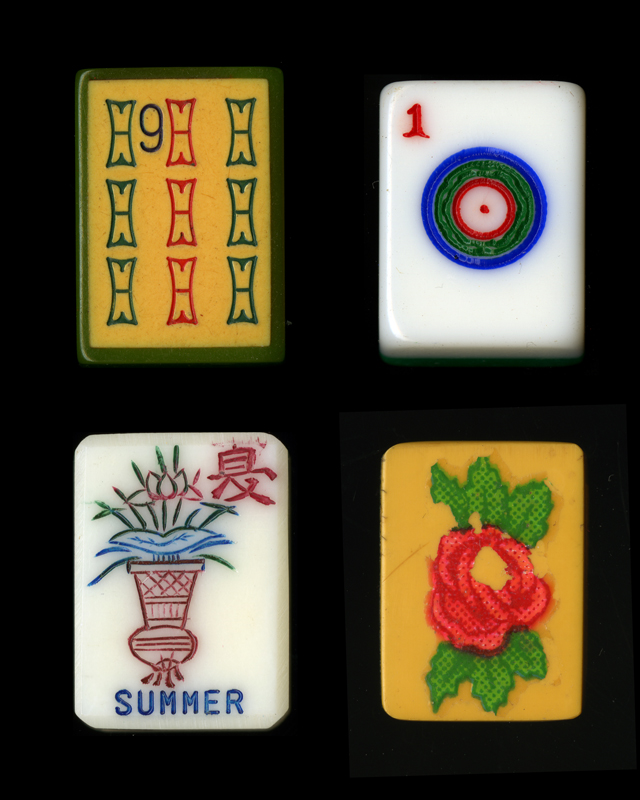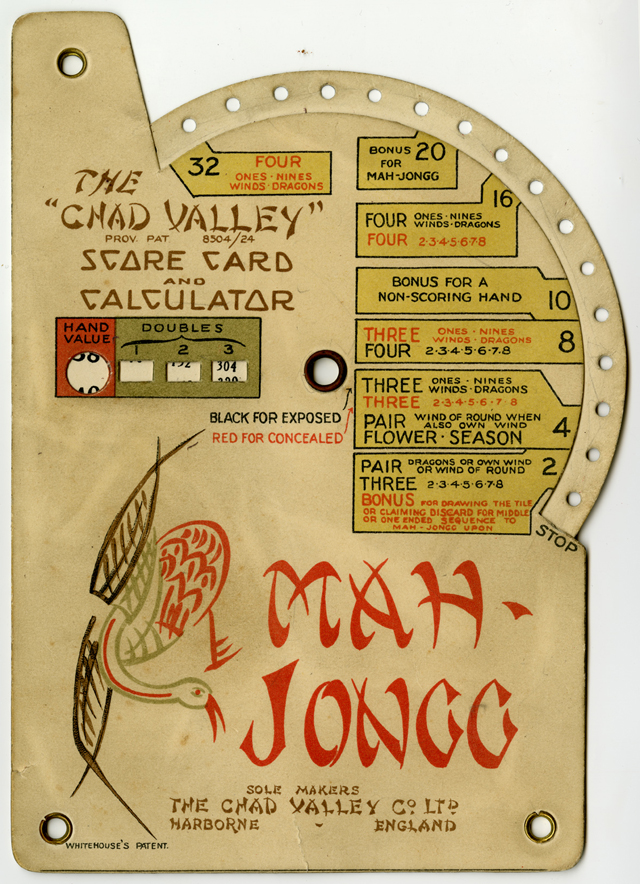I love games. Card games, board games, athletic endeavors, solitaire, puzzles, the works. But I’ve never played mah jongg. And I don’t mean the digital solitaire version, because I’ve definitely played that and it is a poor shadow of the real thing. I know, because I attempted to learn to play mah jongg after a visit to the Contemporary Jewish Museum and I failed. Utterly and completely.
If you come to the museum’s Project Mah Jongg seeking the rules of the game, you will be sorely disappointed. (This CJM offering might be a better resource, or even this.) There are other things to learn, however, and Project Mah Jongg is full of information.

A brief recap of the history of mah jongg in the United States: one Joseph P. Babcock began importing sets from China in the 1920s; the game quickly swept the nation, becoming a fad for all those seeking sophisticated, worldly leisure pursuits; and “crak!” mah jongg was a fixture in the social life of Jewish American women. Today, the game is the basis of a large-scale philanthropic network via the National Mah Jongg League.
The more complicated balance between caricatures and stereotypes, exotic appeal and genuine love for the communal spirit of the game, is carefully and sensitively explored by exhibition sections on the game’s origins, its popularity, its marketing and eventual organized league play. And while the exhibition goes to great efforts to link Jewish and Chinese cultures through a shared history of immigration, assimilation and game-playing, the near-absence of Chinese American voices (or even images of Chinese Americans playing mah jongg) calls attention to the narrowness of the show’s focus.

This traveling exhibition comes to San Francisco from the Museum of Jewish Heritage—A Living Memorial to the Holocaust, New York. The installation is made from red and white modular chipboard furniture, creating the displays for mah jongg-related objects in six double-sided stations. The circular structure rises in a central arching framework, meeting in the middle to form a Star of David, a small and welcome surprise in an otherwise predictable gathering of early to mid-century objects, historical photographs and educational wall text.
On the ochre walls of the gallery, photographs from the National Mah Jongg League, mah jongg-inspired drawings from illustrious illustrators and even a “Mah Jongg Collection” from Isaac Mizrahi are framed by the same chipboard round-cornered rectangular shapes that make up the gazebo-like structure. Unfortunately, these round-cornered rectangular shapes bear a striking resemblance to gigantic Apple devices, rather than the tiles they hope to emulate.
One neat, high-tech aspect of the show is a series of wall-mounted CD players, activated by the downward pull of a cord to play a soundscape of communal laughter, the gentle clack of tiles and the bustle of several games of mah jongg, adding a bit of vitality to the elsewhere static display.
Unique to the CJM (and a saving grace to the show) is local artist Imin Yeh’s Paper Mah Jongg. This collection of 44 screenprints made specifically for the exhibition occupies a corner of the gallery, accompanied by a complete set of folded paper mah jongg tiles within a vitrine. Yeh’s project is both elegant and challenging: providing the sheets of paper to assemble your own paper tiles (a downloadable version is also available from her website) she creates an open-source version of the game, which requires that you devote a full 15 hours to the assembly of a complete set. Her piece points to the invisible labor that goes into the production of cultural souvenirs, a level of self-criticality missing from Project Mah Jongg as a whole.
While some of the public programming associated with Project Mah Jongg is enticing — including a special series of “Mahj Noshes” (snacks made by artist and pastry chef Leah Rosenberg in collaboration with Yeh), open play in the center of the installation and lunchtime mid-century boardgames in Jessie Square Plaza (think Operation, Twister and the like) — the exhibition itself is more nostalgic than inclusive, despite the alluring graphics and obvious historical significance of the game, for Jewish and Chinese Americans alike.
And yet, aloofness can be alluring: I am filled with an overriding desire to learn the game. Now, who will teach me to play mah jongg?
Project Mah Jongg is on view through October 28, 2014 at the Contemporary Jewish Museum. For more information visit cjm.org.